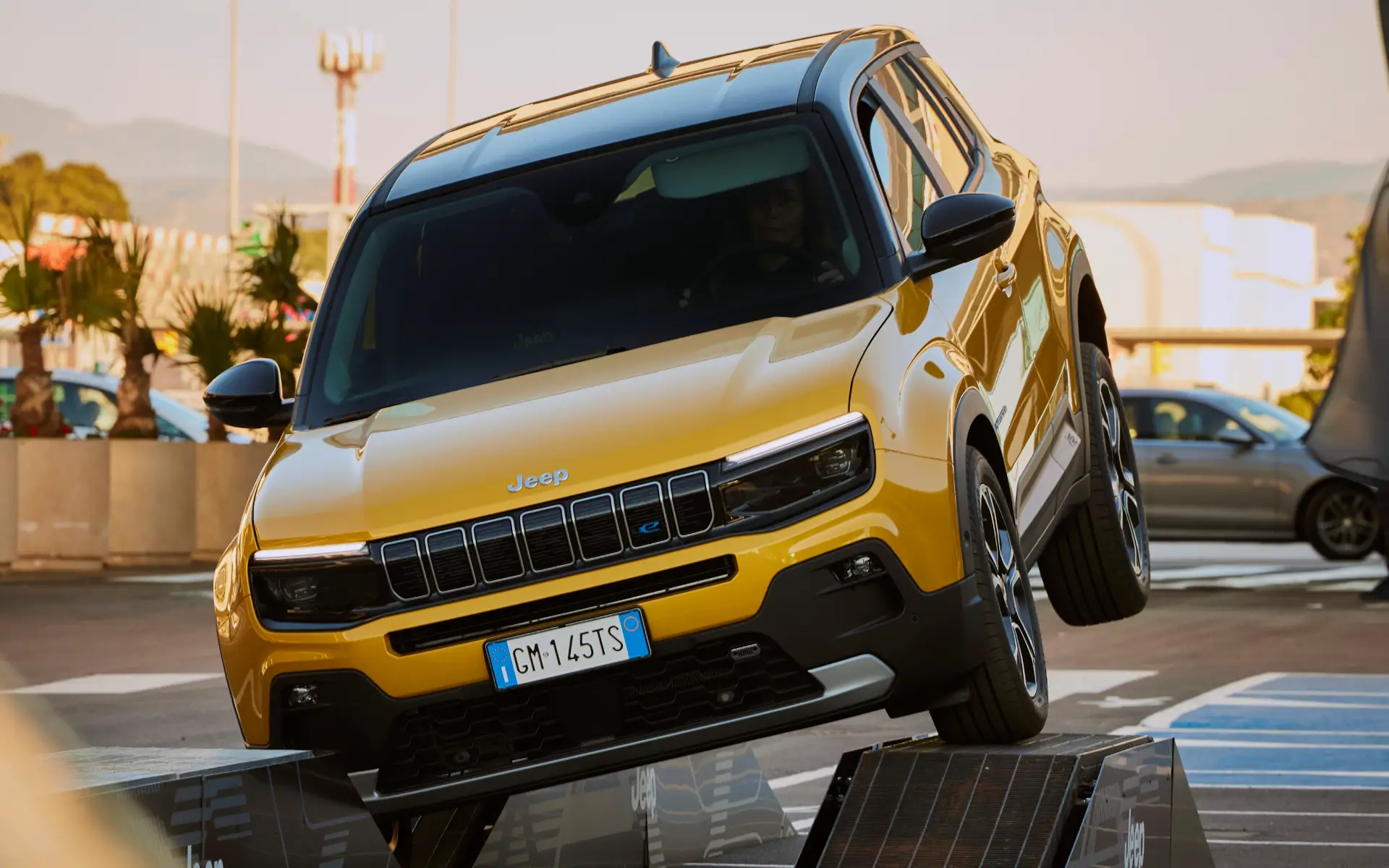Jeep Avenger (2023) Review – A shot in the arm?
The new Jeep Avenger sits on a familiar chassis: Stellantis’ E-CMP platform, which is also the basis for the Peugeot e-2008 and Opel Mokka-e, among others. Sharing platforms is by no means a new practice within the big car companies, and it saves quite a bit of development costs. One drawback of this form of cross-pollination is that cars from different brands become quite similar in terms of driving characteristics. We feared beforehand that something similar was going to be the case with the Jeep Avenger, but while doing our review we quickly found out that Jeep did more than just design a new body.
Watch first, then read? Our video review of the Jeep Avenger:
Jeep Avenger Specifications
First the numbers, starting with the outer dimensions. The Jeep Avenger is 4,084 mm long, making it a whopping 22 centimeters shorter than the previously cited Peugeot. With a wheelbase of 2,562 mm, the Avenger’s wheels sit nicely on the corners of the car. Not only does that give the Jeep tough proportions, it also helps when you’re dealing with steep inclines. You’re not going to find the Avenger’s bumpers scraping the ground anytime soon.
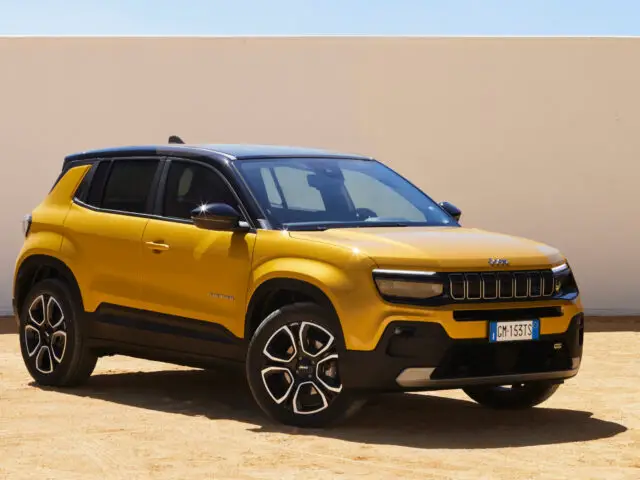
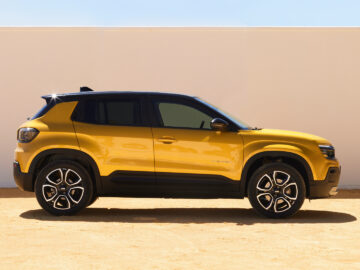
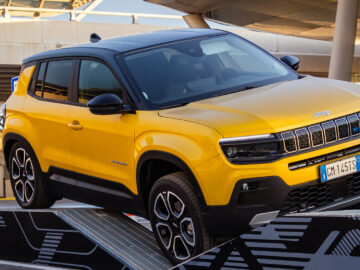
Under the hood of the Avenger is an electric motor rated at 156 hp and 260 Nm of torque. That electric motor gets its energy from a battery with a gross capacity of 54 kWh (net 50 kWh). Because the Avenger’s empty weight of 1,495 kilograms is quite light for an EV and Jeep did its best to optimize the design aerodynamically, the car theoretically gets 392 kilometers far on a single battery charge. Fast charging is possible with 100 kW, which allows the battery to be charged from 20% to 80% in less than half an hour.
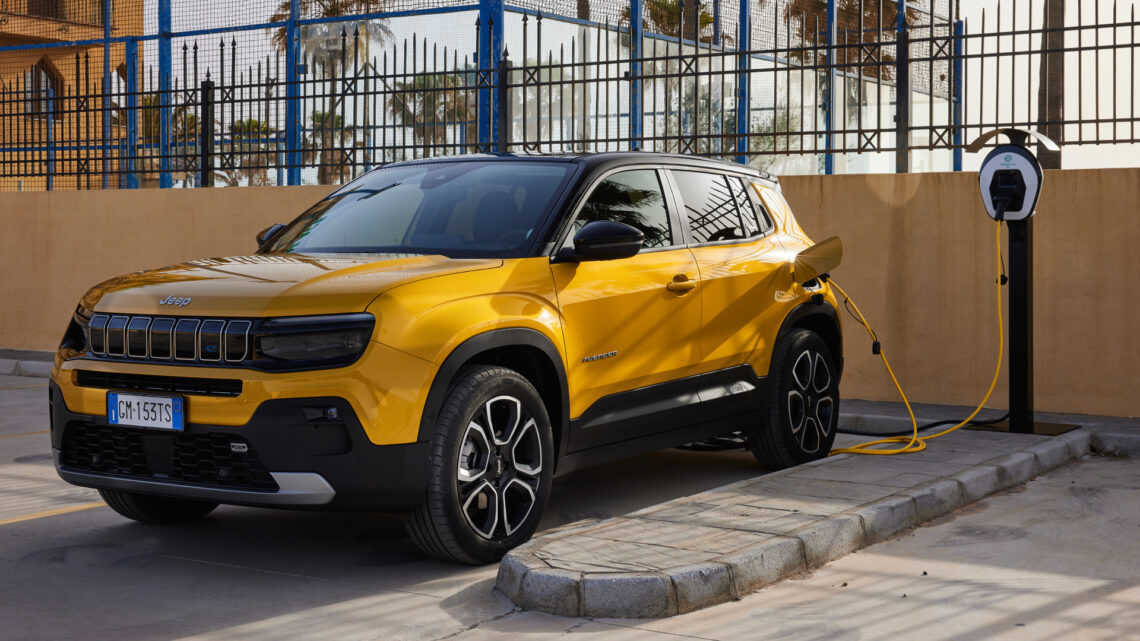
What hinders the Avenger in practical terms is the fact that you can’t tow anything at all. In fact, the maximum allowable towing weight is 0 kilograms and mounting a tow bar is not possible either. That doesn’t quite fit with the adventure lifestyle Jeep is highlighting in the Avenger’s marketing campaign, as carrying more than one mountain bike, for example, is now not possible.
Characteristic appearance
The grille with seven “bars” remains one of the most prominent features of Jeep models. Because of its electric powertrain, of course, the Avenger no longer needs a grille at all, so that’s why Jeep made it close while retaining its distinctive design. Other exterior features of the Avenger include the LED headlights, which consist of two layers and are recessed nicely deep into the body to better protect them from any damage off-road. At the rear are distinctive Jeep taillights, whose layout is reminiscent of the shape of a jerry can.
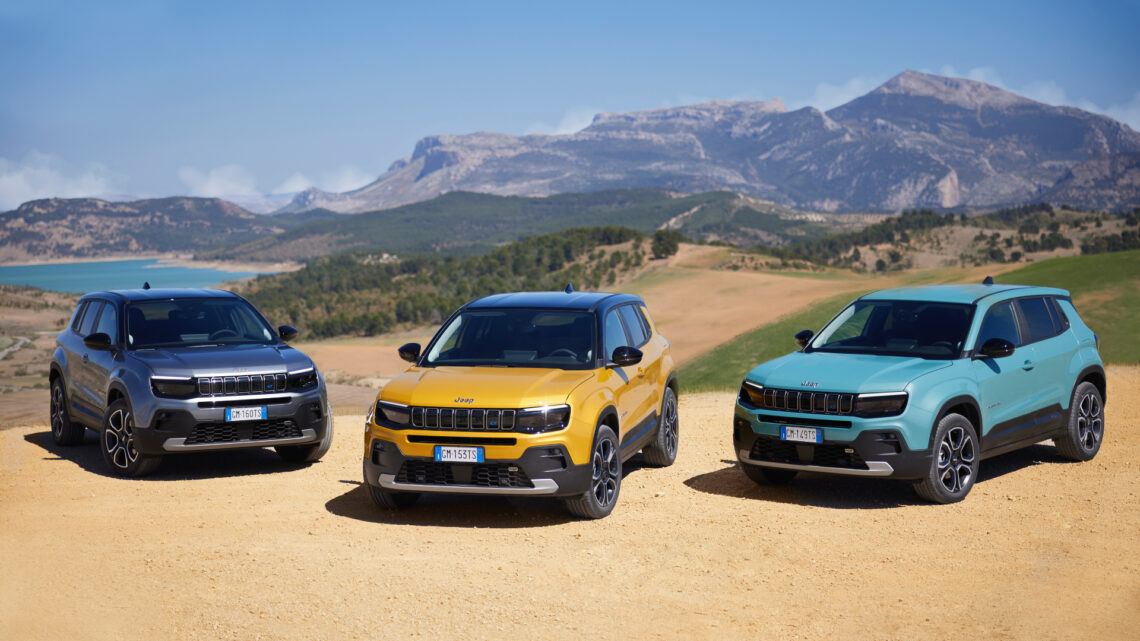
iPad case
In the interior of the Avenger, the first thing that stands out is the trim element that covers the entire width of the dashboard. In our test car, that trim element adopted the exterior color: yellow. It is a cheerful style element that stands out quite a bit in the otherwise rather black dashboard. Two 10.25-inch screens occupy a prominent position: one for the digital instrument cluster, the other for the central touchscreen. That touchscreen is standard on every trim level of the Avenger, and so it can immediately handle Apple CarPlay and Android Auto wirelessly. The digital instrument cluster is slightly smaller as standard: 7-inches.
You can carry quite a bit of stuff in the Jeep Avenger. Not only in the 380-liter luggage compartment, but also in a variety of interior storage compartments. The total volume you can put in there is more than 30 liters, in the large storage compartment in the center console you could even put an entire backpack. Also amusing on the center console is the folding cover that allows you to close the storage compartment. It reminds us of a protective case for an iPad. Of course, there are plenty of options to personalize this case to your liking.

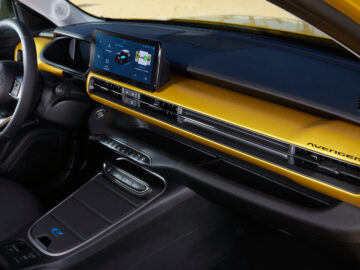
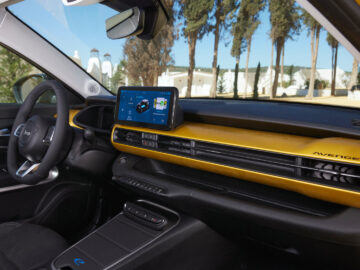
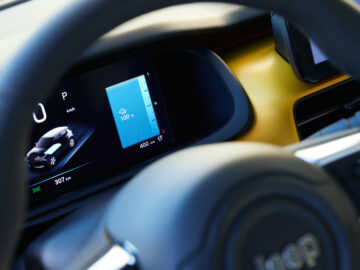
How does the Jeep Avenger drive?
In a word, as you would expect from a compact SUV. With the higher seat, outward visibility is good and the seating position is also well done, with the size and thickness of the steering wheel in particular pleasantly surprising us. We drive a route Jeep has laid out for us in the Malaga area, driving both on and off asphalt. On asphalt, the Avenger is nicely comfortable without becoming numb. The latter applies a bit to the steering, but nevertheless, the Avenger allows itself to be well positioned in corners. In the process, it is positively noticeable that the car hardly tilts, even when you take a corner a little harder.
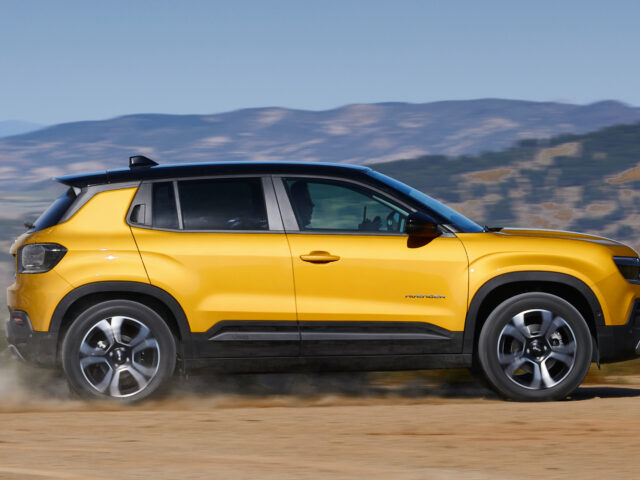
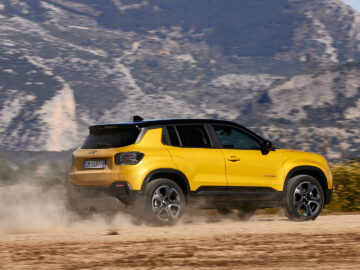
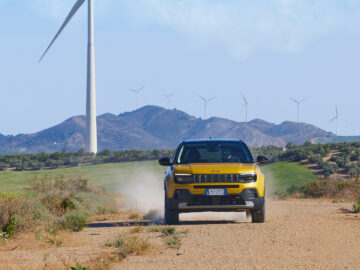
But then we go a little off the beaten path. Does the Avenger still hold up there with its front-wheel drive? The answer is yes. For really rough terrain, of course, the Avenger is not suitable – after all, it lacks all-wheel drive and limited slip differentials – but you can certainly get farther with an Avenger than with the average crossover. This is due to a number of factors: the high approach and exit angles we mentioned earlier, a ground clearance of 20 cm and three special terrain modes: sand, mud and snow. These driving modes modify the way the traction control intervenes when grip is lost so that power is not cut too early. It works, because on the hilly dirt road where we are driving, the Avenger scrambles effortlessly uphill, with traction control allowing a little wheelspin.
Extensive personalization options
Jeep values personalization highly. Customers should already have the opportunity at the dealership to put together their car completely to their taste. For the Avenger, Jeep therefore offers not only a choice of seven colors, but in addition numerous decal packages to make your car truly unique. Furthermore, you can choose from four equipment levels: Avenger, Longitude, Altitude and Summit. The standard version “Avenger” – without an addition to the model name – already has standard features including the 10.25-inch infotainment system, climate control with interior pre-heating and an automatic dimming interior mirror and various ADAS systems on board. It is available from 37,000 euros, which is quite a competitive offer in the segment. In addition to the more expensive trim levels, by the way, you can also choose from individual option packages as desired, so you never overpay for options you don’t really want.
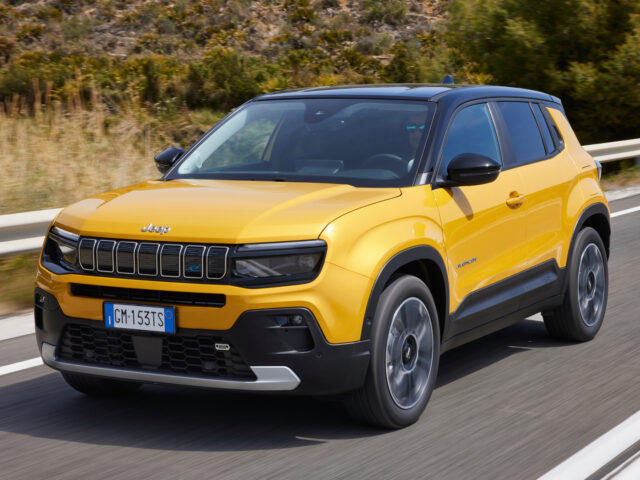
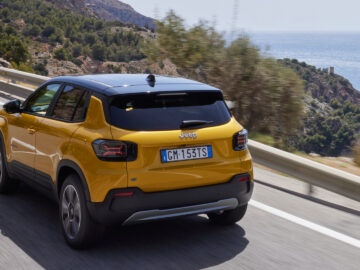

Conclusion Jeep Avenger review
The Jeep Avenger is a fun appearance and also instantly recognizable as a Jeep. Even though it is on a familiar Stellantis platform, Jeep has really put its own complete spin on the car and the Avenger can do things that its relatives cannot. It is a pity that it is not possible to mount a tow bar under the Avenger, but apart from that it is a very pleasant overall package and a model with which Jeep could potentially gain quite a bit of popularity in the Netherlands. That seems to be happening, too, as it seems that quite a few people have already placed orders for an Avenger. We can’t blame them.

